Who came up with nanotechnology?

In less than a month, the BALL of ROBOTS will begin, and you need to write about so much more! Here, for example, nanotechnology - many associate with them the future of robotics, but very few in general imagine the history of "nano".
In the courtyard of 2014, we are very close to the miniature machines , consisting of individual atoms. Nano-tubes have already appeared and the creation of graphene has been made a sensation. The US Congress promises, by 2030, the onset of singularity and the release of anthropomorphic robots based on nanomaterials.
')
At the same time, there is not even a definition of the term “nanotechnology”, and the history of the term itself is complicated and confusing - let's deal with it.

It is believed that nano-technologies originate in the report of Richard Feiman "There is a lot of space at the bottom".
But this is only so considered, in reality, nanotechnologies originate only in 1989, at the same time Feyman’s report got into scientific use, but first things first.
During the second half of the 20th century, both miniaturization technologies (in microelectronics) and atomic observation tools developed. The main milestones of microelectronics are as follows:
- 1947 - the invention of the transistor;
- 1958 - the emergence of the chip;
- 1960 - photolithography technology, industrial production of microcircuits;
- 1971 - the first Intel microprocessor (2250 transistors on one substrate);
- 1960-2008 - the action of "Moore's Law" - the number of components per unit area of the substrate doubled every 2 years.
Further miniaturization has rested within the limits set by quantum mechanics. As for microscopes, the interest in them is understandable. Although X-ray images helped to “see” many interesting things - for example, the double helix of DNA - microobjects wanted to be seen better. Here is the chronology:
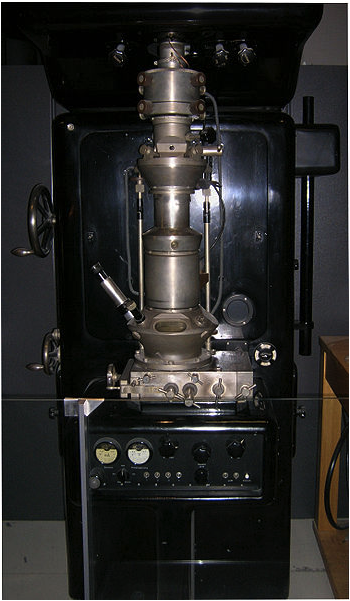
- 1932 - E.Ruska invented a transmission electron microscope. By the principle of action, it is similar to a conventional optical, only electrons instead of photons, and a magnetic coil instead of lenses. The microscope gave an increase of 14 times.
- 1936 - E. Müller proposed the design of an autoelectronic microscope with an increase of more than a million times. By the principle of action, it is similar to the theater of shadows: images of micro-objects located on the needle point, radiating electrons, are displayed on the screen. However, needle defects and chemical reactions made it impossible to obtain an image.
- 1939 - Ruski began to increase the transmission electron microscope 30 thousand times.
- 1951 - Muller invented the auto-ion microscope and obtained the image of atoms on the needle point.
- 1955 - The first in the world image of a single atom, obtained by an auto-ion microscope.
- 1957 - The world's first image of a single molecule, obtained by an autoelectronic microscope.
- 1970 - Image of a single atom, obtained by a transmission electron microscope.
- 1979 - Binnig and Rohrer (Zurich, IBM) invented a scanning tunneling microscope with a resolution not worse than the ones mentioned above.
It became possible to observe objects not only in a vacuum, but in gases and liquids (hello, microbiology!); Plus, the microscope gave a true three-dimensional picture of the surface relief.

But this is not the main thing. In the world of the simplest particles, quantum mechanics operates, and therefore observation cannot be separated from the interaction. Simply put, it quickly turned out that with a microscope one can cling and move molecules, or change their electrical resistance by simple pressure.
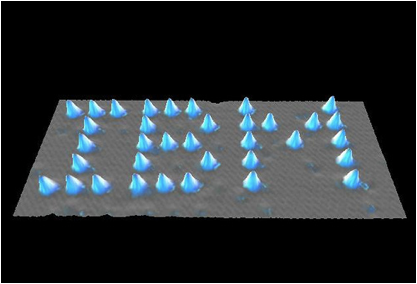
At the end of 1989 a sensation spread through the scientific world: man learned to manipulate individual atoms. IBM employee Donald Aigler, who worked in California, wrote the name of his company on the metal surface with 35 xenon atoms. This picture, later replicated by the world media and already settled on the pages of school textbooks, marked the birth of nanotechnology.
Japanese scientists, who created the inscription “PEACE” 91 HCRL ”(World in 1991, the HITACHI Central Research Laboratory), reported immediately on the repetition of success (in 1991). True, they did this inscription for a whole year and not at all by the method of placing atoms on the surface, but on the contrary - they picked out unnecessary atoms from a gold substrate.
It was only possible to repeat the real achievement of Eygler in 1996 in the IBM Zurich laboratory. As of 1995, there were only five laboratories involved in the manipulation of atoms in the world. Three in the USA, one in Japan and one in Europe. In this case, the European and Japanese laboratories belonged to IBM, that is, in fact, were in fact American.
What did European politicians and bureaucrats have to do in this situation? Just scream about the destructiveness of progress for the environment and the dangers of new technologies in American hands.
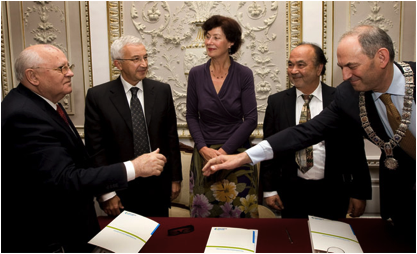
Back in the 1970s, the famous " Roman Club " put forward the ideology of "sustainable development". The report “limits to growth” explicitly stated that the old Europe is already unable to chase America, which means that it is necessary to propagandize the idea of “preserving what has been achieved” - then the environment should be protected and quotas should be introduced for the development of industry under the protection of the atmosphere.
Eric Drexler is undoubtedly the “son of the regiment” of the Rome Club and the leading propagandist of European values in the states. A popularizer of science, a politician and “as if an engineer”, from his youth, imbued with the ideas of “growth limits”.

In 1986 he published the book “Machines of Creation” and created the “Institute of Foresight”. The book describes nanorobots that can create their own kind, as well as the situation when they get out of control: the "gray mucus" of nanorobots-ecophages leads the planet to ecological disaster. The nano-slime meme was quite popular in the media of the early nineties. Drexler himself is often called almost the father of nanotechnology.
That is not fair and wrong, because nanotechnology is an achievement of IBM laboratories. But it so happened that in popular culture, it was Drexler who launched the topic and loud sensations in the nanoworld occurred right at the moment of the wild popularity of his book “Machines of Creation”.
So the role of Drexler was key in this story. In the summer of 1992, Senator Al Gore invited him to speak to the Senate on the theme “New Technologies for Sustainable Development”. A year before the speech, he defended his thesis “Molecular Machines: Production and Use in Computers” at MIT and, being an excellent speaker, managed to convince senators of the reality and practical benefits of molecule manipulation. Thus was born the lobist group in the us senate and "nanotechnology" moved into the political field. The following year, Gore becomes the vice president of the United States.

It is worth remembering that we are talking about the beginning of the nineties - the “cold war” was over and the US government was confused about the back of the head in search of the direction of the billions freed from the war. Ecology, environmental protection, nanotechnology and "sustainable development" sounded great and could well win this tender. there was only one problem.
American industrialists and scientists didn’t want anything “stagnant”; they wanted to seize world markets, build new boosters, and profit growth with Nobel prizes. Al Gore, being the vice-president of the United States (1993-2001), never spoke of "sustainable development", even in his report "developing science in the national interest" (1994), nanotechnologies are mentioned only in passing. Although after retirement, as a private person, Gore returned to both nanotech and the ideas of the Roman Club, for which he received the Nobel Peace Prize for combating global warming (2007).
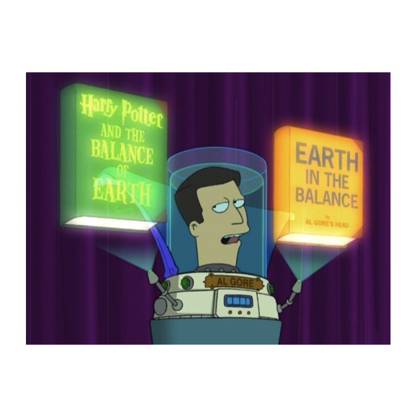
All of this undermined the scientific position of the writer Drexler. Even before that, the “weak scientific base” was made to him, and the “Institute of Foresight” was no-no, they called it a charlatan sect - and then the vice-president supported the idea only partially. According to the report of Gore, nanotechnology was supposed to be used not at all for environmental purposes, but for the development of American industry!
This is where the magic begins.
On the one hand, the National Science Foundation, scientists and industrialists considered Drexler and its nanotechnology as charlatanry, but on the other hand, the flywheel of discussion of the initiative was already launched at the top and it was planned to allocate significant amounts for research.
In this case, it was in the second half of the nineties and everyone saw how effectively Gore was able to develop another innovative project - the Internet.

1996, Clinton and Gore lay lokalku in school
Few people know, but it was precisely through the efforts of Gore that the creation of the Internet infrastructure and even the first browser, mosaic, was fully financed. But most importantly, the administration of Gore created the conditions for investing in the Internet. What brought the explosive growth of the industry in 1999 and the super profits for the participants called the “dotcom boom”. It all ended with the collapse of the “dot-com bubble” just a year later, but the deed was done. Despite the collapse of the market, Gore is deservedly called the “father of the Internet”, without it everything would have appeared ten years later - and Google and even Habr.
Inevitably, the question arose: do nanotechnologies promise the same quick profits as the Internet? It was worth a try.
In 1999, the project “National Nanotechnology Initiative” finally lay down on the president’s table. The project was so well crafted and brushed that there was some problem. If the ecology was thrown out, sustainable development was forgotten, and mechanosynthesis was dissolved in hundreds of other technologies, then why specifically spend billions of dollars on all this? What exactly will NRI give America? No explanations followed.

NNI started in 2000 with Clinton speaking to Caltech students. Its government funding amounted to $ 300 million, and increased all subsequent years, regardless of the political conjuncture (1.8 billion in 2011, approximately 10% of the NASA budget).
Clinton spoke at a lecture hall where Feynman made a famous report back in 1959. The speech was introduced into scientific circulation by Drexler in 1989, using it to its fullest. Therefore, the nanotechnological tradition undeservedly attributes the first impulse to Feynman.
But the “nanotechnologies” themselves only began to raise more and more questions. 14 years have passed since the start of the initiative, tens of billions have been allocated and where is the result? It can be assumed that it is classified. Or ... just not doing what we expect.
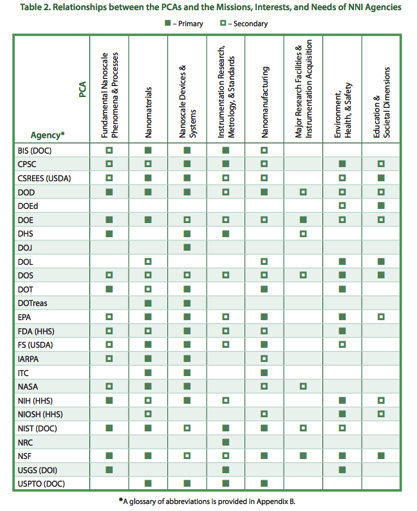
Assuming that the NRI has a hidden core, such as a program for creating anthropomorphic robots, then combining such heterogeneous directions within one program looks quite logical. As well as the association for this 25 departments and agencies, including key NSF, DOE, DOD, NIH, NASA and NIST. And the lack of problems with financing for 14 years.
We can also recall that the Boston Dynamics, which impressed the public with samples of robots, left MIT exactly in 1992 - right after Drexler defended his thesis there, which consisted of general words, promises and forecasts ... On the other hand, the reviews openly state the possible the use of nanotechnology in the production of a variety of robots for the needs of the Ministry of Defense - from nanomachines to mechanical man is indistinguishable from the present.
In general, NNI made a strong impression on Europe. But in order to somehow control, develop or prohibit "nanotechnology" - it was necessary to give them a definition.
In contrast to the NRI, the European program “Nanotechnologies, materials and processes” clearly stated about “sustainable development” and about the possibility of the future transformation of “nanotechnologies” into “ecotechnology”. In 2004, the total financing of “nano” in the EU amounted to 1 billion euros (in England - 45 million f.st.).
And only in 2011, the European Commission finally approved the official concept of "nanomaterials": in them the proportion of particles with sizes of 1-100 nanometers (at least in one dimension!) Ranges from 1 to 50 percent. It is especially noted that fullerenes, graphene flakes and carbon nanotubes also belong to nanomaterials.
Under this definition gets anything. It makes a nanotechnologist even a housewife dripping oil on the surface of the water. That is, under the brand of nanotechnology can hide anything.
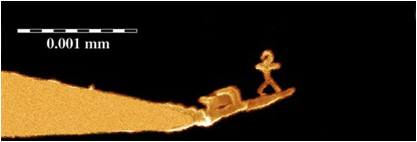
Source: https://habr.com/ru/post/221193/
All Articles